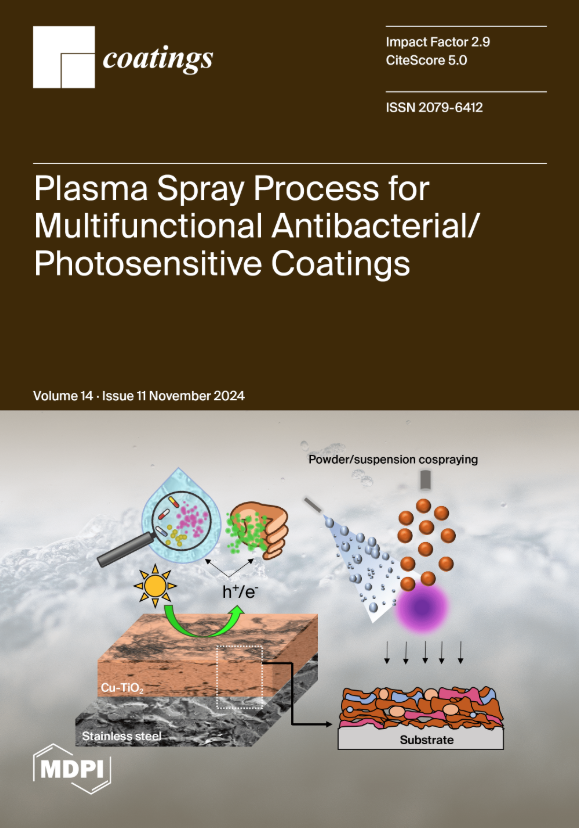Impact of Calcium Chloride Addition on the Microstructural and Physicochemical Properties of Pea Protein Isolate-Based Films Plasticized with Glycerol and Sorbitol
IF 2.9
3区 材料科学
Q2 MATERIALS SCIENCE, COATINGS & FILMS
引用次数: 0
Abstract
Ca2+ can boost protein-protein interactions and, if present at an appropriate level, can potentially improve some physicochemical properties of protein-based gels and films. This study aimed to determine the effects of CaCl2 (0%–0.05% w/w) on the microstructural, optical, water affinity, and mechanical characteristics of glycerol (Gly)- and sorbitol (Sor)-plasticized pea protein isolate (PPI)-based films. CaCl2 caused darkening and a color shift of the films from yellow to yellow-green. Additionally, decreased light transmission, particularly in the UV range, acidification, and reduced moisture content were observed. CaCl2 decreased the water vapor permeability of the Gly plasticized film by an average of 20% with no effect on the Sor-plasticized film. All films were completely soluble in water. CaCl2 negatively impacted the mechanical integrity of the films, reducing the tensile strength of the Gly- and Sor-plasticized films by ~16% and 14%–37%, respectively. Further increases in CaCl2 content (0.1% and 0.2% w/w) led to concentration-dependent microvoids resulting from protein over-crosslinking and/or coagulation. In summary, the incorporation of CaCl2 into PPI-based films did not provide significant benefits and actually worsened key properties, such as transparency and mechanical strength. The type of plasticizer influenced how CaCl2 affected some properties of the PPI-based film.添加氯化钙对用甘油和山梨醇塑化的豌豆蛋白异构体薄膜的微观结构和物理化学特性的影响
Ca2+ 可以促进蛋白质与蛋白质之间的相互作用,如果含量适当,还有可能改善基于蛋白质的凝胶和薄膜的某些物理化学特性。本研究旨在确定 CaCl2(0%-0.05% w/w)对甘油(Gly)和山梨糖醇(Sor)塑化豌豆蛋白分离物(PPI)薄膜的微观结构、光学、水亲和性和机械特性的影响。CaCl2 使薄膜变暗,颜色从黄色变为黄绿色。此外,还观察到透光率下降(尤其是在紫外线范围内)、酸化和含水量降低。CaCl2 使 Gly 塑化薄膜的水蒸气渗透性平均降低了 20%,而对 Sor 塑化薄膜则没有影响。所有薄膜都能完全溶于水。CaCl2 对薄膜的机械完整性有负面影响,Gly 和 Sor 塑化薄膜的拉伸强度分别降低了约 16% 和 14%-37%。CaCl2 含量的进一步增加(0.1% 和 0.2% w/w)会导致蛋白质过度交联和/或凝结而产生浓度依赖性微空洞。总之,在基于 PPI 的薄膜中掺入 CaCl2 并没有带来明显的好处,反而会使透明度和机械强度等关键性能变差。增塑剂的类型会影响 CaCl2 对基于 PPI 的薄膜某些性能的影响。
本文章由计算机程序翻译,如有差异,请以英文原文为准。
求助全文
约1分钟内获得全文
求助全文
来源期刊

Coatings
Materials Science-Surfaces, Coatings and Films
CiteScore
5.00
自引率
11.80%
发文量
1657
审稿时长
1.4 months
期刊介绍:
Coatings is an international, peer-reviewed open access journal of coatings and surface engineering. It publishes reviews, research articles, communications and technical notes. Our aim is to encourage scientists to publish their experimental and theoretical results in as much detail as possible. There is no restriction on the length of the papers. Full experimental and/or methodical details must be provided. There are, in addition, unique features of this journal:
* manuscripts regarding research proposals and research ideas will be particularly welcomed
* electronic files or software regarding the full details of the calculation and experimental procedure - if unable to be published in a normal way - can be deposited as supplementary material
 求助内容:
求助内容: 应助结果提醒方式:
应助结果提醒方式:


